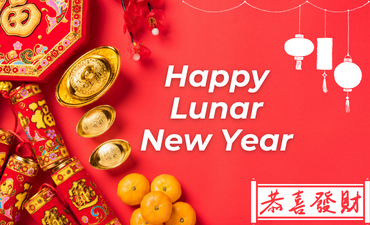
February 1 marked the beginning of the Lunar New Year, otherwise known as Spring Festival, and often referred to in the past as Chinese New Year. However, the latter term is a misnomer because the Lunar New Year holiday is actually celebrated in many Asian countries and even in global cities such as San Francisco with a large Asian immigrant population! Lunar New Year has different names depending on the country and its language – for example, it is referred to as Chūnjié in Mandarin, Seollal in Korean, and Tȇt in Vietnamese.
Unlike the one-day celebration to which we are accustomed in the United States (based on the Gregorian calendar), the Lunar New Year is usually celebrated for multiple days, or even weeks. The reason we refer to the holiday as the ‘lunar’ new year is that its calculation of a calendar year is based on moon cycles.
Each year in the 12-year lunar cycle is represented by one of a dozen animals known collectively as the Zodiac – these include the rat, ox, tiger, rabbit, dragon, snake, horse, sheep, monkey, rooster, dog, and pig. In addition to the animal associated with a given year, there is an annual shift in which element is considered to correspond with that year – these include earth, water, fire, wood, and metal. 2022 marks the year of the water tiger, which only happens once every 60 years! Acording to tradition, the association with the water tiger marks this year as being a fortuitous time for bold action.
Why do so many millions of people celebrate during the Lunar New Year?
In ancient times, the holiday evolved as the time of year when families would feast in honor of their ancestors, as well as various deities, initially as a ritual meant to celebrate the harvest and curry favor for bountiful harvests to come. In modern times, celebrants take the opportunity to visit family and loved ones far away, making the Lunar New Year the busiest travel time of the year in many Asian countries.
Although each culture embraces different traditions for marking the start of the Lunar New Year, there are a number of treasured rituals that have remained widespread and have stood the test of time, most having to do with the themes of abundance, community, and well-wishing:
- Many households do a thorough cleaning of their living quarters, as this process is thought to rid their homes of inauspicious spirits and to clear space for positive outcomes.
- Red is a frequently-seen color in the myriad decorations that adorn homes, businesses, and other public places, as it is thought to symbolize good fortune. Similarly, red envelopes are often given to children by elders as a gesture of hope for their prosperous futures.
- Foods associated with good luck are often consumed at parties, such as fish, glutinous rice ball soup, and dumplings, which sometimes even have coins baked inside!
- The last day of festivities is usually marked in grand finale style with events like parades and fireworks.
While such traditions originated in Asian countries, there are an increasing number of celebrations in the United States as the Asian American population continues to grow faster than any other demographic. In fact, we may be seeing Lunar New Year take on unprecedented importance in the coming years – Rep. Grace Meng of New York has put forward a bill titled the Lunar New Year Day Act as of this month that would make the celebration our 12th federal holiday. The holiday is already recognized in some school districts nationwide that have significant Asian American populations, such as New York City, Philadelphia, and even our own Montgomery County here in Maryland!
Further Learning
In the meantime, if you’d like to learn more about the Lunar New Year holiday and the cultures that celebrate it, AACPL offers several options:
1. Please browse our curated reading lists below, available for adults, teens/young adults, and kids.
2. For a deeper dive into Asian languages spoken in countries where Lunar New Year is most celebrated, consider using our Library Exclusive Resources for language learning:
- Mango: Mandarin l Cantonese l Korean l Filipino (Tagalog) l Malay l Vietnamese
- Rosetta Stone: This program allows you to choose from Mandarin, Korean, Filipino (Tagalog), or Vietnamese.
- Udemy: Mandarin l Cantonese l Korean l Vietnamese l Malay
3. Check out materials from our library catalog in Chinese (we even have Chinese ebook and Chinese digital magazine collections in Overdrive/Libby!), Korean, or Vietnamese, and even a few in Tagalog or Tibetan!
4. Finally, if you’re a film buff, you can view films in Chinese through AACPL’s Kanopy streaming platform.
However you decide to celebrate the Lunar New Year, your local library is here to enrich your experience!